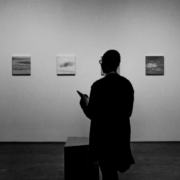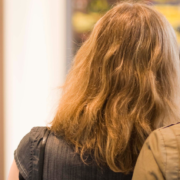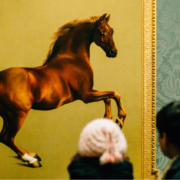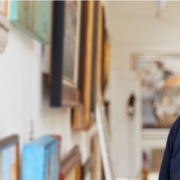The Timeless Appeal of Still Life
Here at Victoria Fine Art, we have witnessed numerous trends come and go over the years in business as a fine art dealer. One genre that consistently stands the test of time is still life. Although it is sometimes overlooked by novice collectors, still life paintings offer a unique blend of beauty, symbolism, and historical significance that makes them a sound investment.
As a fine art dealer, I encourage collectors to explore this genre with an open mind. The themes of still life are timeless, and the works of master artists in this genre continue to appreciate in value. When you buy original fine art paintings, particularly in the still life genre, you are not just purchasing a piece of art; you are making an investment in a tradition that has captivated art lovers for centuries.
Why Still Life?
At first glance, a still life painting might appear on the surface as simply a careful arrangement of objects, perhaps flowers, fruits, or everyday items. However, the beauty of still life lies in its ability to represent much more than that. Still life truly captures the essence of its subjects, often incorporating symbolic meanings that reflect deeper themes such as mortality, abundance, and the passage of time.
For those looking to buy fine art, especially online, still life paintings offer a diverse range of styles and subjects that can suit various tastes and budgets. Whether you are a seasoned collector or new to the world of art investment, still life provides a stable and accessible entry point into the market.
The Evolution of Still Life
Still life painting can be traced back to the classical world, but it was during the Renaissance that the genre truly began to gain popularity. Artists started exploring the potential of still life as a means of showcasing their technical skill, as well as their ability to convey complex ideas through the arrangement of objects.
By the 17th century, particularly in the Netherlands, still life had become a prominent genre. Dutch Golden Age painters like Jan Davidsz. de Heem and Willem Kalf elevated still life to new heights, integrating their work with symbolic meanings that resonated with the religious and philosophical concerns of the time. These paintings were not just decorative pieces, but statements about the transience of life and the fleeting nature of earthly pleasures. This prominent theme became known as “Vanitas.”
Prominent Themes in Still Life
Still life paintings are rich in symbolism and can be interpreted in various ways, making them a fascinating subject for both collectors and art enthusiasts. Here are some of the most common themes found in still life paintings.
Nature and the Ephemeral
Many still life paintings focus on the beauty of nature and the fleeting nature of life. Flowers, often depicted in full bloom, are a common subject, and symbolise the peak of life and its inevitable decline. Such paintings are a celebration of the natural world, but they also carry a subtle reminder that nothing lasts forever.
Vanitas
Vanitas paintings remind viewers of the inevitability of death and the transience of earthly pleasures. Common symbols include skulls, wilting flowers, and hourglasses. These works are a reminder to live a virtuous life, but they are also a reflection on the beauty of the world, despite its impermanence.
Wealth and Abundance
Conversely, still life paintings can also celebrate abundance. This theme is often depicted through lavish arrangements of fruits, flowers, and luxurious items such as fine glassware or precious metals. These paintings not only showcase the artist’s skill in rendering textures and materials but also serve as a testament to the wealth and prosperity of the owner.
Memento Mori
Similar to Vanitas, Memento Mori paintings serve as reminders of death. However, they are often more personal and direct, featuring symbols like a solitary skull or extinguished candle. These works are powerful in their simplicity and are often more sombre than the elaborate Vanitas compositions.
Investing in Still Life: Artists to Watch
For those considering investing in fine art, especially when searching for fine art paintings for sale online, it is essential to know which artists are worth your attention. Here are a few artists whose still life paintings are highly sought after.
Jan Davidsz. de Heem
Widely considered as a master of the Dutch Golden Age, de Heem is renowned for his elaborate still life paintings that combine elements of Vanitas with a celebration of abundance. His works are highly detailed, making them highly sought after for both art historians and collectors.
Paul Cézanne
Cézanne’s still lifes, particularly his series of apples, are nothing short of iconic in the art world. His approach to colour and form was and still is, considered revolutionary, and influenced a whole generation of artists. For collectors looking to buy original fine art, a Cézanne still life is a prized possession.
Giorgio Morandi
Moving into the 20th century, Giorgio Morandi’s still lifes are celebrated for their simplicity and meditative quality. His muted colour palette and focus on everyday objects create a sense of timelessness that resonates with contemporary collectors, making them a popular choice and wise investment.
Georgia O’Keeffe
Known for her large-scale flower paintings, O’Keeffe brought a modern perspective to the still life genre. Her works are bold and vibrant, making them a perfect choice for collectors interested in 20th-century American art.
A Timeless Investment
Still life paintings offer a unique opportunity for art collectors to invest in works that are both visually stunning and rich in meaning. Whether you are searching for fine art for sale websites or looking to buy fine art online, still life paintings provide a diverse range of options that can enhance any collection.
If you have any further questions regarding the wide selection of still life paintings to buy online at Victoria Fine Art or wish to set up an appointment, please don’t hesitate to get in touch. Feel free to complete this form, telephone +44 (0)1727 861669 or email info@victoria-fine-art.com for more information.











